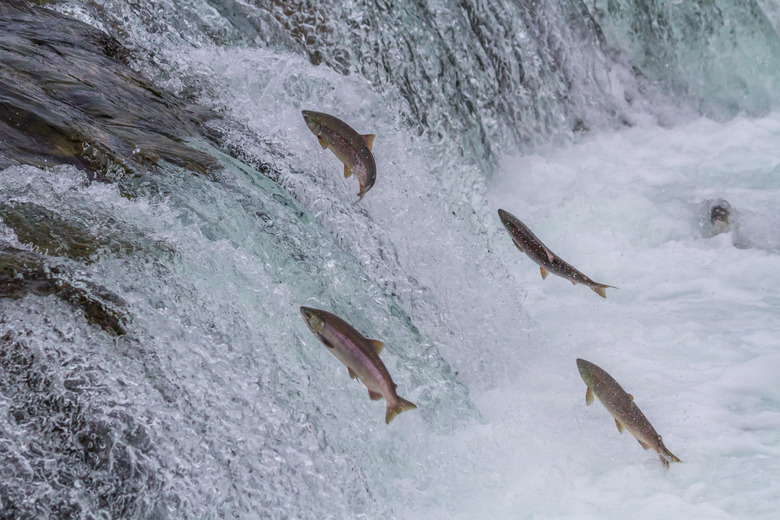What The Heck Is A Salmon Cannon And How Does It Work?
If you've been on social media over the past few days, chances are you've seen that weird and wonderful video of a "salmon cannon." And if you haven't caught it yet (hey, we get it, it's summer), you're in for a treat:
It's easy to see why the video caught on, right? Watching fish fly through the cannon is, frankly delightful. But it's also great for the fish – and the ecosystems they're a part of. Here's why.
Why Do Salmon Need a Cannon?
Why Do Salmon Need a Cannon?
The basic function of the salmon cannon is obvious – it helps get the fish from point A to point B much faster than they could accomplish on their own.
But why is that especially important for salmon?
Well, it's because salmon's life cycle is defined by their migration patterns. See, while salmon are typically thought of as a saltwater fish, they actually start their life in fresh water. Female salmon lay nests of eggs in fresh water. Once the new babies hatch, they stay close by, living off nutrients provided by the nest. Eventually, they grow into small salmon, called fry.
While fry can feed independently, they stay in fresh water until they're big enough – which can take up to a year – to start migrating to the ocean. There, they'll spend years at sea, migrating between feeding grounds, until they're fully mature and ready to reproduce.
The comes major migration No. 2. Adult salmon make the arduous swim upstream and back into freshwater to spawn. Because they're swimming against the current – kind of the equivalent of running uphill – the journey is taxing, and eats away at the fish's fat stores, and even starts to deplete their muscles and organs. The journey upstream is also the last trip of the salmon's life – after salmon reach the spawning grounds and reproduce, they die.
So Here's Where the Salmon Cannon Comes In
So Here's Where the Salmon Cannon Comes In
Salmons' migration to their spawning grounds is already exhausting, but it's made even harder by urbanization and climate change. Habitat changes linked to climate change – like warmer than average waters – can affect the timing of the salmons' migration, while dams can physically block their migration path.
Thankfully, the salmon cannon is here to solve some of those problems. By providing a path between waterways, scientists can turn a disrupted migration route into a smooth, continuous one. Just a moment in the cannon can save salmon a day's worth of swimming, making migration easier and helping more fish survive the journey.
But Isn't the Cannon Scary?
But Isn't the Cannon Scary?
We'll be honest: Getting shot through a tube doesn't seem like anyone's idea of a good time. But the developers of the cannon have made it as pleasant as possible. Once they're inside, the salmon are exposed to a steady mist of water that lets them breathe easy. And the salmon actually sustain fewer injuries in the tube than they do using some other migration aids, like fish ladders, so it looks like the cannon is relatively safe.
So far, using the cannon is relatively new. As CNN reports, the makers have sold about 20 cannons, mostly to government agencies in the United States and in Europe. But who knows – maybe that viral video will encourage more governments to invest in the cannon to protect their salmon.
Cite This Article
MLA
Tremblay, Sylvie. "What The Heck Is A Salmon Cannon And How Does It Work?" sciencing.com, https://www.sciencing.com/what-the-heck-is-a-salmon-cannon-and-how-does-it-work-13721017/. 3 September 2019.
APA
Tremblay, Sylvie. (2019, September 3). What The Heck Is A Salmon Cannon And How Does It Work?. sciencing.com. Retrieved from https://www.sciencing.com/what-the-heck-is-a-salmon-cannon-and-how-does-it-work-13721017/
Chicago
Tremblay, Sylvie. What The Heck Is A Salmon Cannon And How Does It Work? last modified March 24, 2022. https://www.sciencing.com/what-the-heck-is-a-salmon-cannon-and-how-does-it-work-13721017/
